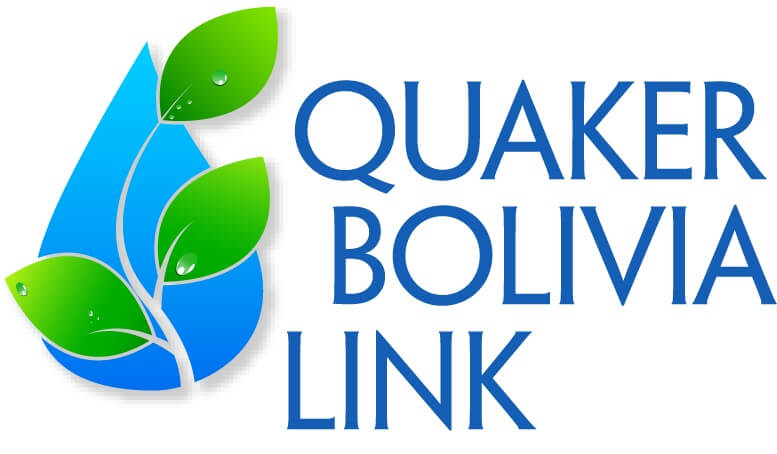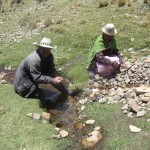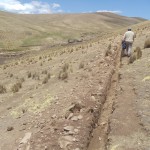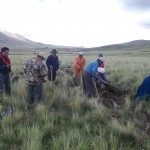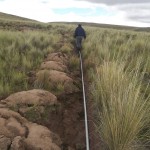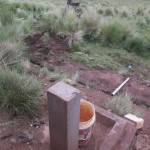QBL started the project at the end of October. Our Bolivian staff met with the villagers and finalized the details of the project design. QBL worked with the community to organize the first tasks of digging the ditches. They also began making some of the purchases for the project. Unfortunately, cement was scarce at the time, causing a short delay in the project.
The QBL Bolivian staff takes their vacations in December, so they planned to return in January in order to see how much progress was made with the ditches.
In January, QBL revisited the project. The community had hired a tractor to dig most of the ditches for the piping. They still had to do some digging from the main pipe to their homes.
At the end of January, we held our first training with the community on hygiene and health. 80% of the families in the community attended the workshop. Each attending family received a hygiene kit with towels and soap. The rest of the kit will be passed out during the next training. After the training, our staff coordinated with the project committee to organize the next work day.
On February 3, our staff visited with the community members from Chaco Arriba, the neighboring village that will supply the spring water. They decided how to transport all the sand and other building materials to the springs in order to begin building the water intake and storage tank. Each family would be responsible for assisting the mason with the construction of the water tanks and water intakes.
By mid-February, they began installing the main piping and secondary connections. Each family was responsible for ensuring that the pipes around their homes were covered with soil. On February 22, we had a donor from the UK visit the project to see the work that we are doing. Upon her return, she wrote:
Thank you so much for giving me the opportunity to learn more about and see the work of QBL, my amazing day with Eloy [QBL Bolivian staff] has given me much to think about and take back home. I will be speaking and writing of my experiences today for meetings back in the UK when I return in April.
Our staff is expecting to finish the project in April. Even though we will not get the March activity reports until mid April, I’m assuming that they are currently working on the faucets in each home and will finish the training in hygiene and health. There will be one other training before the project is finished. Then they need to test the piping and system to make sure there are no leaks.
The only other problem that our staff has mentioned is that the municipality has been slow to provide their agreed percentage of funding. This has caused delays in purchasing some construction materials.
Several members from our board and I are planning to visit Bolivia in May. Our staff in Bolivia has asked if we would like to participate in the project inauguration. It will be a festive time of sharing meals, dancing and speeches. We will try to get pictures and videos for everyone to see.
